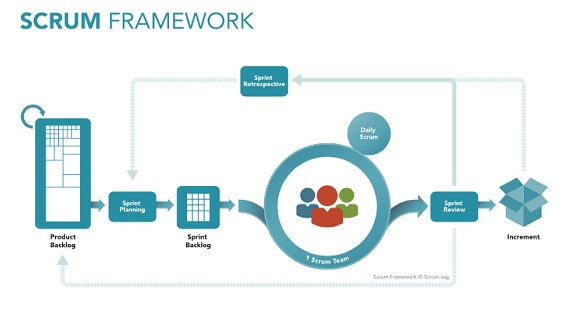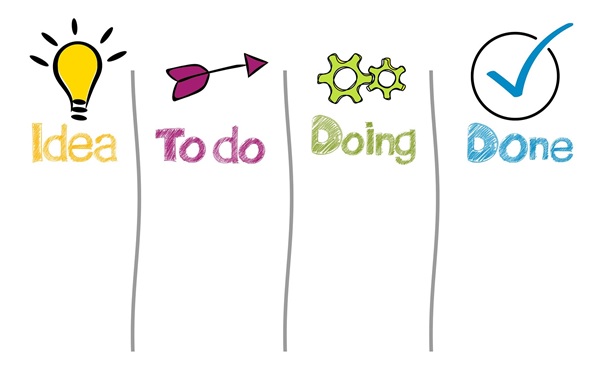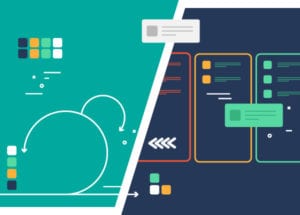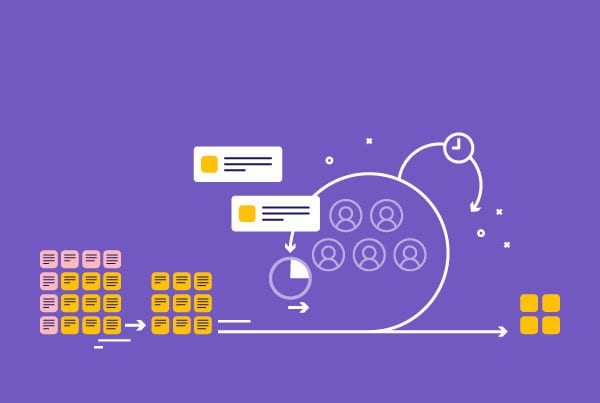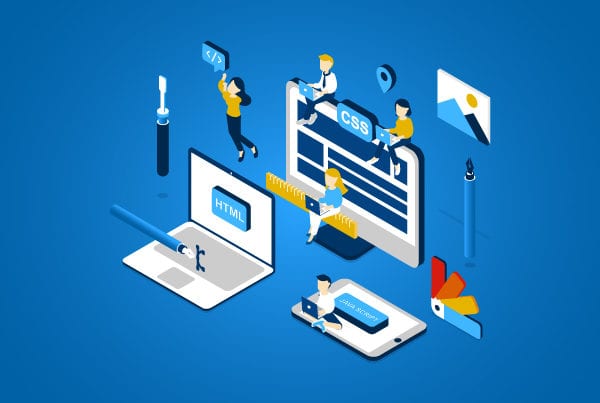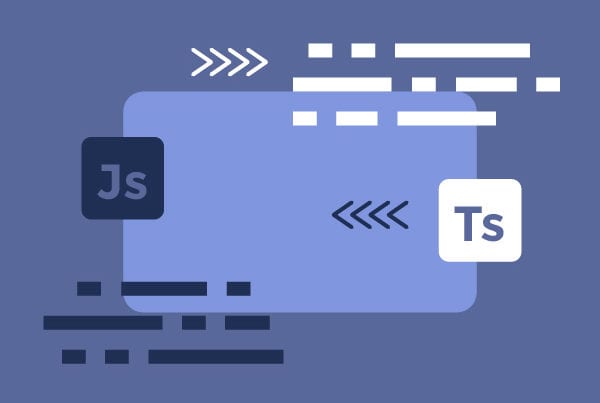Scrum vs Kanban
In a previous article, we discussed agile methodologies and their benefits. We mentioned there are two core agile methods: Scrum and Kanban. In short, Scrum is the preferred choice for cross-functional teams working on a product with tasks that can be divided into more than one iteration, while Kanban consists of an extensive requirement list where tasks are tracked according to their stage in the process. In this article, we’ll go into detail and explain what Scrum and Kanban entail and the main differences between Scrum vs Kanban.
What is agile?
To recap, agile is a set of principles and ideals that give way to specific development methodologies. These methodologies are based on close collaboration between developers and stakeholders, which is why early and frequent deliveries, continuous improvement and great adaptability to change are part of its foundations. Agile methodologies take into account that the ability to respond and adapt is vital to succeed, especially in a world where technology and trends are continuously developing and shifting. Scrum and Kanban are two agile methods or processes that help implement the agile project management approach in different ways.
Scrum![]()
What is Scrum?
Scrum is a product development framework that aims at delivering value in the least amount of time possible. It places an emphasis on teamwork, as well as on dividing progress into relatively small increments. In Scrum, this progress is divided into iterations called “sprints” that usually last two to four weeks. Key features and goals are defined before each sprint to complete a specific set of tasks or a product increment. This means that, by the end of each sprint, a Scrum team should have completed a new feature of the product.
When should you use it?
Due to its nature, Scrum works best in cross-functional teams working on projects that can be easily split into clearly-defined increments. This agile methodology is also quite useful in cases where requirements may change throughout the project or where not all details are available from the get-go.
How does it work?
Scrum relies heavily on communication and entails various meetings that help with the various parts of the process. To begin with, there are sprint planning meetings at the start of each sprint to establish goals. Then, there are daily meetings during each sprint called daily scrums in which the team goes over the progress so far, as well as any problems that may arise. Finally, at the end of each sprint, a retrospective meeting is held to reflect on the sprint process and focus on what went well and what needs work for the next iteration.
Moreover, Scrum includes three clearly defined roles that help everything go over smoothly: the product owner, the scrum master and the development team. The product owner is in charge of managing the product backlog, prioritizing the work to be done. The scrum master makes sure the team follows agile values and principles and the development team is made up of the people in charge of delivering the tasks included in each sprint.
Kanban![]()
What is Kanban?
Kanban works as a visual system that helps a development team organize its work. It is basically a to-do list that includes all requirements, which are tracked according to their stage in the process (to-do, doing and done). What matters in the Kanban method is not so much delivering a specific item in a set amount of time, but the priority of the task at hand.
When should you use it?
Kanban is particularly useful for specialized teams working on projects that are highly unpredictable. If many changes are expected along the way, Kanban allows teams to easily change priorities and focus on the more urgent tasks. As Kanban tasks or features don’t have a fixed delivery time, they can be postponed if the client requests a different one to be released first.
How does it work?
Due to its adaptability, there is no set process for Kanban, but there are four key principles or practices. The first is visualization: Kanban uses a board that helps visualize the work that is being done. The board can be customized as needed but has three core categories: to do, doing and done. The second practice is limiting the work in progress to improve workflow and quality, as well as to carry out more frequent deliveries. Third comes flow management, aimed at maximizing value delivery, minimizing lead times and being as predictable as possible. Finally, Kanban revolves around the continuous improvement of the team’s development process.
Unlike Scrum, there are no specific roles in this approach. Teams usually use the ones that they have already set and adapt them if they consider it necessary.
Scrum vs Kanban: Main differences
Now that we have a clear idea of what each of these concepts entails, let’s take a look at their main features side by side:
| Scrum | Kanban |
| Focused on strict planning | Adaptable to frequent changes |
| Divided into sprints to organize the backlog | Uses a single board to organize the continuous flow of work |
| Estimation is a priority | Estimation is not a priority |
| Cross-functional team | Specialized team |
| Specific roles within the team | No required roles within the team |
| Time-based | Task-based |
| New items cannot be added to an ongoing sprint | New items can be added at anytime |
| New work is released at the end of each sprint | Continuous delivery |
Final thoughts on Scrum vs Kanban
As you can see, whether Scrum or Kanban is the best choice for you will depend on the structure of your team and the requirements of the project you are working on. It is important to know the differences and what each one involves to make sure they are the right fit for your project and avoid any issues. You might even find that a hybrid model is more appropriate and enjoy the best of both worlds. We hope this Scrum vs Kanban has given you some insight into the practical world of agile methodologies and some clarity on what Scrum and Kanban really mean.



